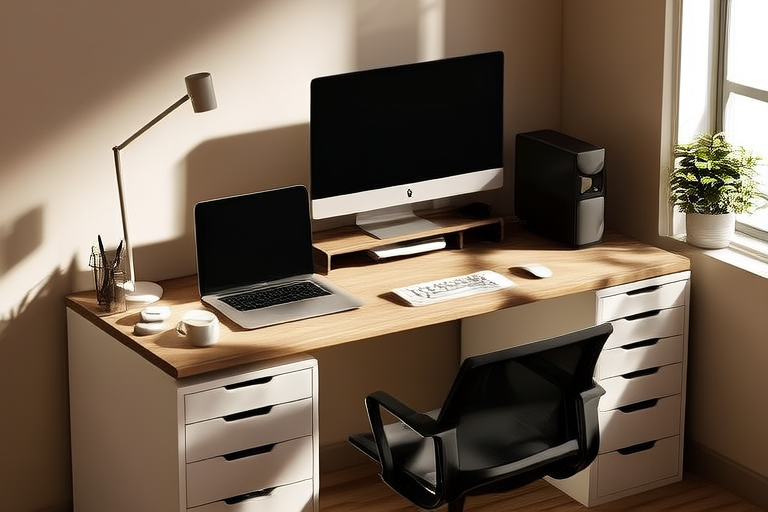Introduction
In today’s digital age, more and more professionals are opting for home-based workspaces. Whether you’re working from home full-time or just looking to create a more efficient setup, maximizing space and functionality is key. A well-designed home office can significantly boost productivity and comfort. This article will explore the best office technology solutions that can transform your home workspace into an effective and enjoyable environment.
Understanding Your Needs
Before diving into specific tech solutions, it’s crucial to understand your unique requirements. What kind of work do you do? How much space do you have? Are there any specific tasks that require special tools? Answering these questions will help you tailor your setup to fit your needs perfectly.
Assessing Available Space
One of the first steps in setting up an efficient home office is assessing the available space. Consider both vertical and horizontal storage options. For example, wall-mounted shelves can provide additional storage without taking up valuable desk space. If you have limited floor space, consider using multi-functional furniture like desks with built-in drawers or adjustable height tables.
Identifying Essential Tools
Once you’ve assessed your space, identify the essential tools needed for your daily tasks. Common items include a reliable computer, high-quality monitor, ergonomic chair, and sufficient lighting. Depending on your job, you might also need specialized equipment such as printers, scanners, or projectors.
Tech Solutions for Enhanced Productivity
Now that you have a clear understanding of what you need, let’s look at some of the best technology solutions that can enhance productivity in your home office.
Ergonomic Equipment
Investing in ergonomic equipment can make a significant difference in your comfort and health. An ergonomic keyboard and mouse can reduce strain on your wrists and hands, while an adjustable standing desk promotes better posture and circulation. Additionally, consider adding a footrest if you find yourself slouching during long hours of sitting.
Smart Lighting
Proper lighting is vital for maintaining focus and reducing eye strain. Smart lights allow you to adjust brightness levels throughout the day based on natural light conditions outside. They also come with various color temperature settings, which can help set the mood and improve concentration.
Noise-Cancelling Headphones
If noise is a distraction in your home, noise-cancelling headphones can be a game-changer. These devices use advanced technology to block out unwanted sounds, allowing you to concentrate fully on your work. Many models also feature active noise cancellation (ANC) technology, which further enhances their effectiveness.
Practical Tips and Case Studies
To help illustrate how these solutions can be implemented effectively, let’s take a look at a few real-world examples.
Case Study: Sarah’s Home Office Makeover
Sarah, a freelance graphic designer, recently renovated her home office to increase productivity. She started by purchasing a standing desk and an ergonomic chair, which immediately improved her posture and reduced back pain. Next, she installed smart lights that automatically adjust according to daylight levels, ensuring optimal visibility throughout the day. Finally, she added noise-cancelling headphones to minimize distractions from household noises. As a result, Sarah reports feeling more energized and focused during her work sessions.
Step-by-Step Guide: Setting Up Your Ideal Home Office
- Choose the Right Location: Select a quiet area with minimal distractions.
- Select Appropriate Furniture: Invest in comfortable chairs and desks designed for prolonged use.
- Install Efficient Lighting: Opt for LED bulbs or smart lighting systems that mimic natural light.
- Add Soundproofing Elements: Use curtains, rugs, or acoustic panels to dampen sound.
- Organize Cables: Keep cords neat and tidy using cable organizers or clips.
Conclusion
Creating an efficient and comfortable home office requires careful planning and consideration of various factors. By understanding your individual needs and incorporating the right technology solutions, you can maximize both space and functionality. Remember to prioritize ergonomics, invest in quality lighting, and eliminate distractions whenever possible. With these tips in mind, you’ll be well on your way to transforming your home workspace into a productive sanctuary. Start small but think big—every improvement counts!
